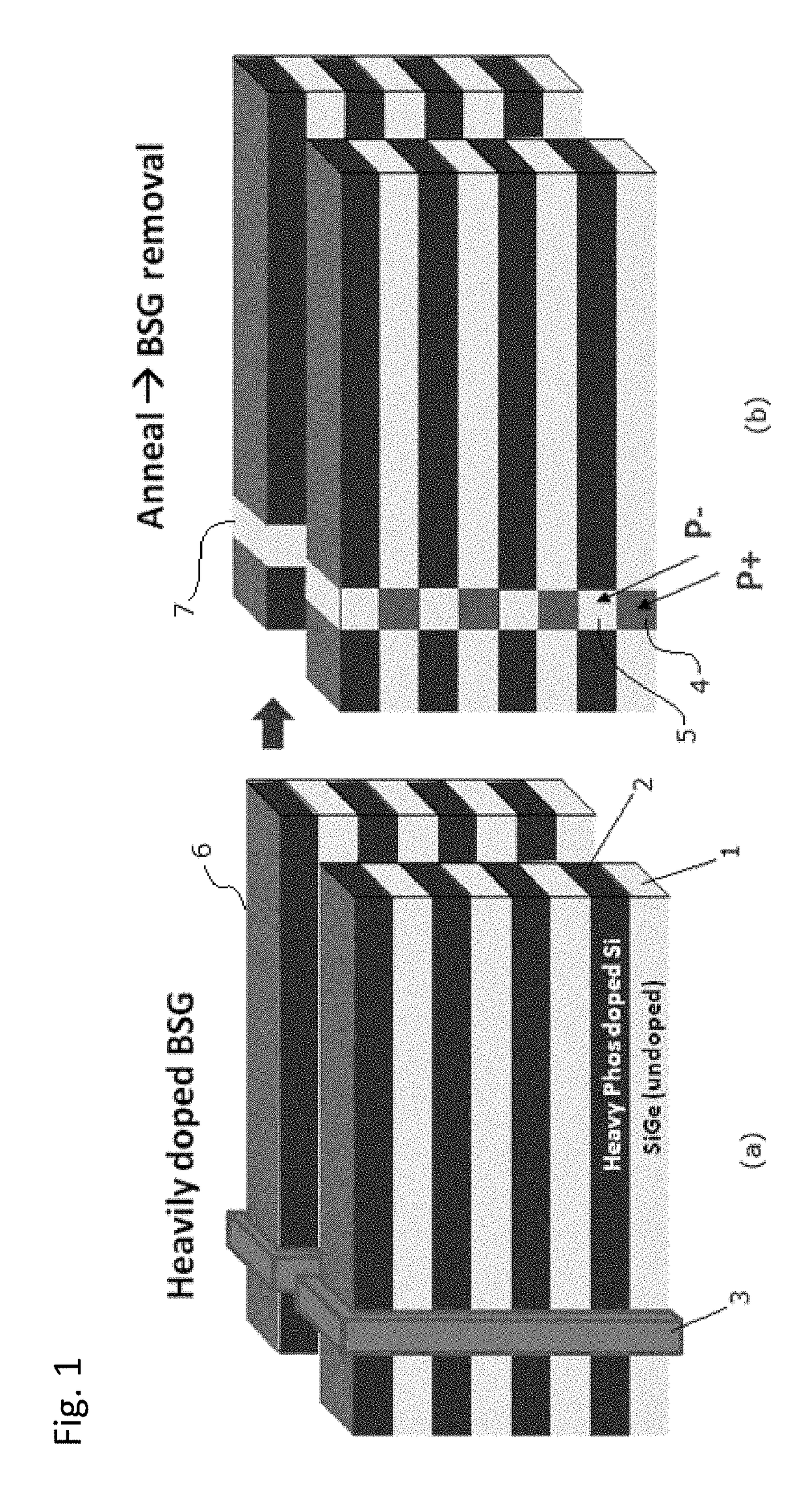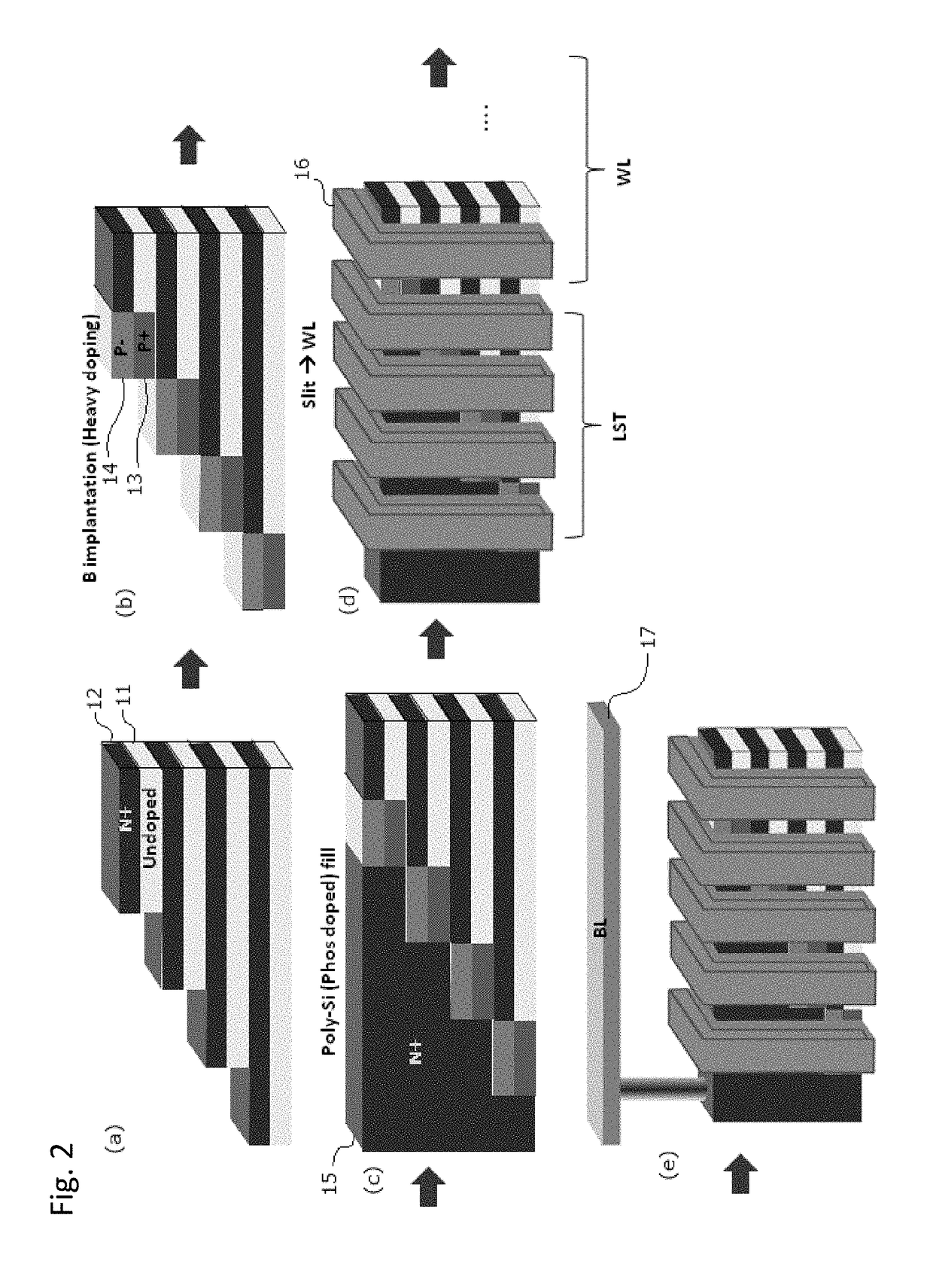3D stacked multilayer semiconductor memory using doped select transistor channel
a semiconductor memory and select transistor technology, applied in the direction of semiconductor devices, basic electric elements, electrical equipment, etc., can solve the problems disadvantages of gate oxide injection, and achieve the effect of deterioration of reading latency
- Summary
- Abstract
- Description
- Claims
- Application Information
AI Technical Summary
Benefits of technology
Problems solved by technology
Method used
Image
Examples
example 1
[0062]Undoped Si (or undoped SiGe) layers and phosphorous-doped Si layers were alternately deposited by epitaxial grow processes on a semiconductor substrate wherein the number of stacked layers was about 64. The thickness of the undoped Si (or undoped SiGe) layer was about 50 nm (typically 45 nm to 55 nm) and the thickness of the phosphorous-doped Si layer was about 20 nm (typically 15 nm to 25 nm).
[0063]A staircase was formed in the stacked structure on one side of the stacked structure by patterning, wherein each step of the staircase was constituted by the undoped Si (or undoped SiGe) layer and the phosphorous-doped Si layer. The staircase was formed by: (i) forming a mask (e.g., resist film) in a pattern on the stacked structure of the undoped Si (or undoped SiGe) layers and phosphorous-doped Si layers; (ii) etching the uppermost phosphorous-doped Si layer and undoped Si (or undoped SiGe) layer using the mask to form a step; (iii) etching the mask for next step formation by iso...
example 2
[0068]In Example 2, the staircase was formed on both sides of the stacked structure in the same manner as described in Example 1. Next, boron was doped to each staircase constituted by the phosphorous-doped Si layers and undoped Si (or undoped SiGe) layers by ion implantation at a boron concentration of 1×1016 / cm2 (typically 5×1015 / cm2 to 5×1016 / cm2). Next, the stacked structure was annealed at a temperature of about 1,000° C. (typically 950° C. to 1050° C.) to disperse boron in the phosphorous-doped Si layers and undoped Si (or undoped SiGe) layers.
[0069]Next, a silicon oxide film was deposited on the entire surfaces of the stacked structure with the staircases by CVD, followed by flattening the surface by CMP whereby the space above the staircases was filled with the silicon oxide film as illustrated in (a) in FIG. 3. Next, the silicon oxide film was removed from the space above the staircases by lithography and etching, and then, phosphorous-doped poly-Si was deposited by CVD on ...
PUM
 Login to View More
Login to View More Abstract
Description
Claims
Application Information
 Login to View More
Login to View More - R&D
- Intellectual Property
- Life Sciences
- Materials
- Tech Scout
- Unparalleled Data Quality
- Higher Quality Content
- 60% Fewer Hallucinations
Browse by: Latest US Patents, China's latest patents, Technical Efficacy Thesaurus, Application Domain, Technology Topic, Popular Technical Reports.
© 2025 PatSnap. All rights reserved.Legal|Privacy policy|Modern Slavery Act Transparency Statement|Sitemap|About US| Contact US: help@patsnap.com



